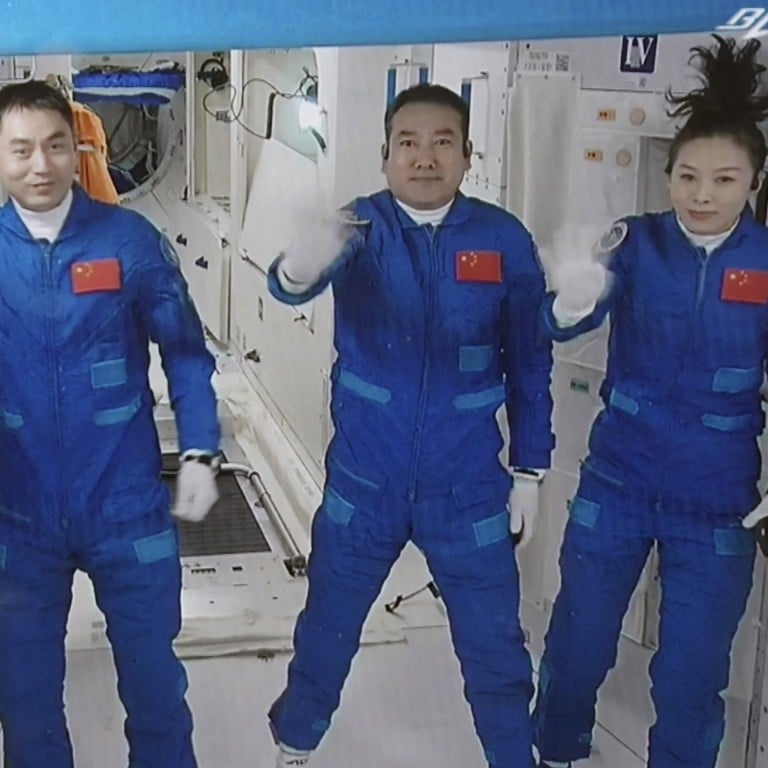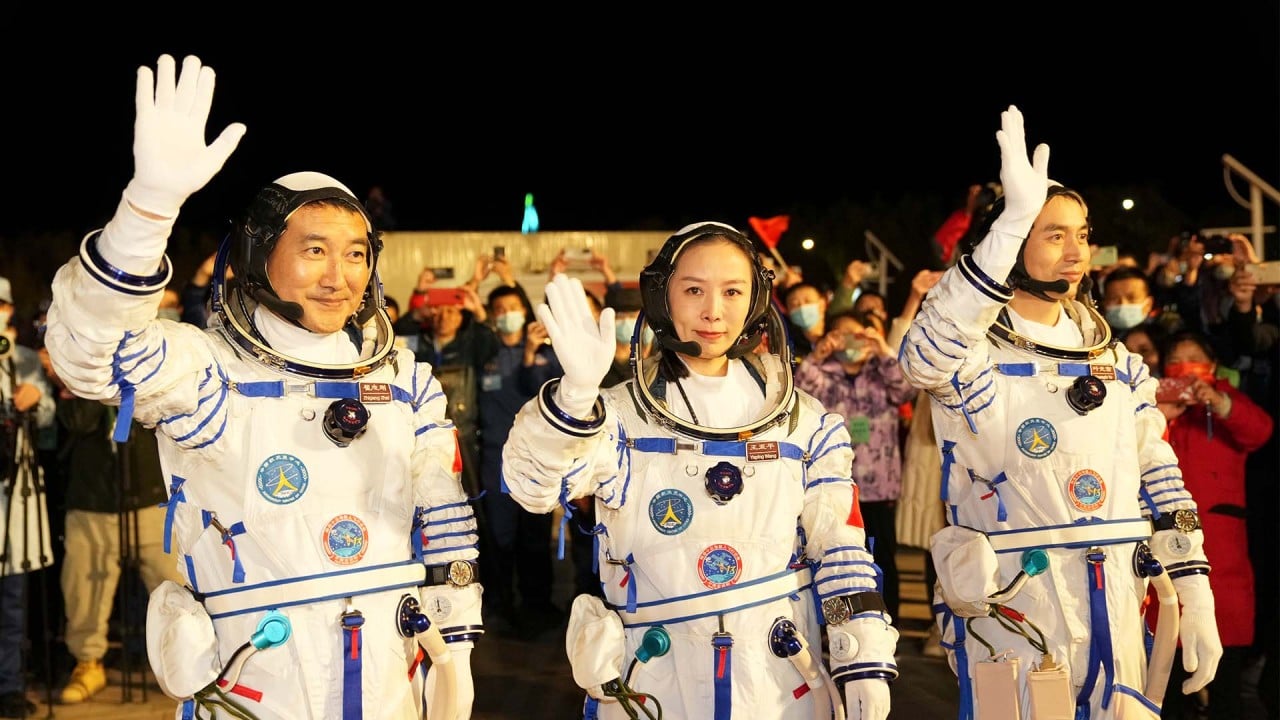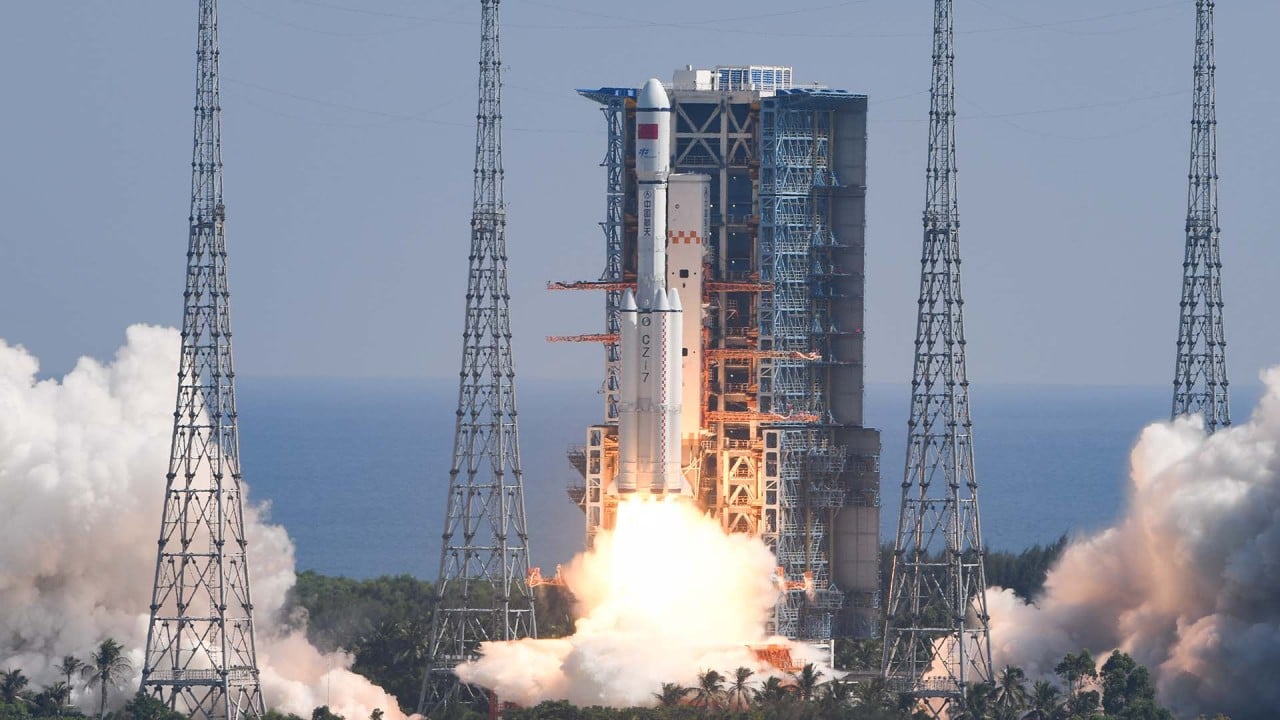
China’s Shenzhou 13 crew enters space station for 6-month stay
- Length of mission to be one of the biggest challenges for the two men and one woman on board
- Spacecraft connects to core module’s vertical port in complex manoeuvre
“We will work together, complete every task meticulously and strive to explore this vast universe,” Wang said in a nationwide broadcast after entering the module.
The Shenzhou 13 spacecraft docked at the station at 6.56am on Saturday, about 6½ hours after lift-off from the Jiuquan Satellite Launch Centre in the Gobi Desert in northern China.
In a first for China, the spacecraft docked at the Tianhe core module’s side port facing the Earth, a more difficult manoeuvre than previous procedures because it requires constant adjustment in the final approach.
The space station’s other ports are already occupied by the Tianzhou 2 and 3 cargo ships, forming a T-shaped configuration.

01:42
China's Shenzhou 13 launches astronauts on Tiangong space station mission
Once Shenzhou 13 docked, mission commander Zhai opened four hatches and led the way into the core module, while Wang fed status updates to the control centre in Beijing.
The crew then prepared their bunks, turned on their wireless earphones for communication with the command centre and connected their handheld devices to the module’s Wi-fi system.
“We thank everyone for their support and care for the Shenzhou 13 crew. We will live up to high expectations. The Communist Party and the people need not worry,” said Ye, who is on his first space mission.
Why China’s latest space mission is having a midnight launch
Shenzhou 13 is the space agency’s last major mission this year. Another six missions – two of them crewed – are planned for next year to finish building the space station and deliver the Wentian and Mengtian laboratory modules.
The astronauts are taking part in China’s longest crewed mission yet – the Shenzhou 12 crew spent three months in space.
Zhai said the length of the mission was the biggest challenge for the astronauts.
“The six-month stay in space without gravity is an unprecedented test for the astronauts’ physical and psychological health, and the reliability of the equipment,” Zhai said before lift-off.
The space agency will have another spacecraft on standby for launch at short notice in case of an emergency at the Tiangong.
In addition to doing hundreds of aerospace medicine and physics experiments during their stay, the astronauts will also do two to three spacewalks and install new robotic arms to help with future construction operations.

00:55
China launches cargo ship to deliver supplies to its Tiangong space station
A source from Jiuquan launch centre said the crew would also have to oversee the arrival of the Tianzhou 4 cargo ship, which is scheduled for launch early next year.
“It will be the first time a cargo ship will dock with the help of the astronauts on board. They will test the manual docking systems then,” the Jiuquan source said.
In February, the crew will also become the first Chinese astronauts to celebrate Lunar New Year in space.
In later missions, the Shenzhou 15 crew will carry out an in-orbit rotation with the Shenzhou 14 crew, meaning the space station will become home to six astronauts for the first time.
When completed, the Tiangong will be about a quarter of the size of the International Space Station, which was built by a coalition of 16 countries.
The Chinese space station is likely to be the only one in near-earth orbit by the end of the decade because the ageing ISS, especially its Russian Zvezda service module which houses life-support systems, is nearing the end of its life.


